Questions? 800-523-5874 | [email protected]
- Prepmaster™ Specimen Preparation Robot
- TEM Grids
- TEM Window Grids
- Omniprobe Nanomanipulation Systems
- K-kit Wet "Liquid" TEM Kit
- Specimen Mounts
- SEM Specimen Holders
- Index and Finder SEM Grids
- SEM for Forensics
- SEM Sample Preparation Station Materials
- Cryogenic Personal Protection Equipment
- Cryo Dewars & Flasks
- Cryogenic Grids & Accessories
- Cryogenic Vials & Racks
- Cooling Chambers & Ice Baths
- Prepmaster™ Specimen Preparation Robot
- Laboratory Microwave Ovens
- LYNX II Automated Tissue Processor
- EMS Poly III
- Microtomes
- Tissue Slicers
- Rapid Immersion Freezer
- Heaters & Chillers
- SEM Cooling Stage
- Glow Discharge Systems
- Sputter Coaters & Carbon Coaters
- Stages
- Freeze Dryers
- Critical Point Dryers
- Cryo-SEM Preparation System
- Specimen Transfer Systems
- Decontaminators
- Desiccators
- Centrifuges
- Dry Baths
- Stirrers, Hot Plates
- Vortexers & Magnetic Mixers
- Rotators & Rockers
- Ovens & Incubators
- Vibration Isolation
- Air Sampling
- Vacuum Pumps
Concrete Thin Section Fluorescence
EMS Catalog #SFA-46
Fluorescence is a valuable tool in the concrete petrographic world, especially for the examination of thin sections (on the order of 20µm). There are a variety of techniques for introducing the fluorescence to the sample, most commonly by impregnating the sample under vacuum with an epoxy containing a fluorescent dye, or by replacing the water in the sample with a fluorescently marked ethanol.
Fluorescence can make features of interest stand out in high contrast, or can be compared to a reference to make quantitative measurements. Among the characteristics that can be studied are:
- Pore size and location
- Water to cement ratio
- Microstructure
- Fractures and cracks
Once the fluorescence has been introduced to the sample it is generally examined under a microscope. The NIGHTSEA Model SFA fluorescence adapter system is a simple and economical way to add a versatile fluorescence viewing capability to existing microscopes that operate at a wide range of scales. The dyes used in the concrete examination process are very strongly fluorescent and are excited well by ultraviolet or blue light.
The images of concrete thin section fluorescence below were made with a DSLR camera (top row), a stereo microscope (second row), and a Keyence VHX series digital microscope with the VH-Z100 lens (rows three and four). NIGHTSEA's Royal Blue excitation was used for all images.
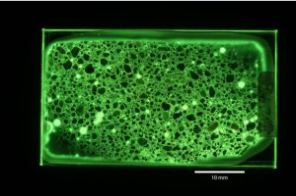 |
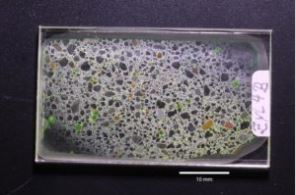 |
| Fluorescein conrete thin section | Macro Image of concrete thin section, white light |
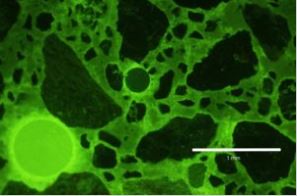 |
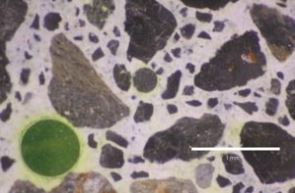 |
| Concrete thin section under blue light excitation | Concrete thin section, white light |
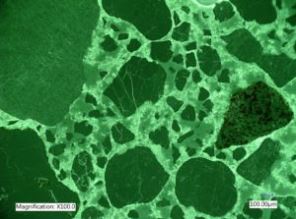 |
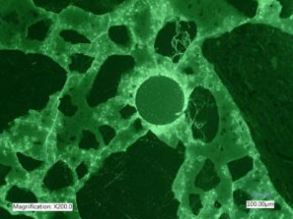 |
| 100x | 200x |
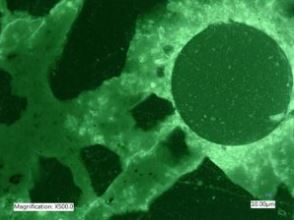 |
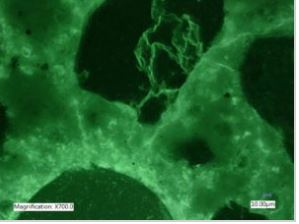 |
| 500x | 700x |
We are grateful to the Department of Mineralogy and Geochemistry, Institute of Geoscience and Geography, University Halle-Wittenberg, Germany for providing the sample for testing.
